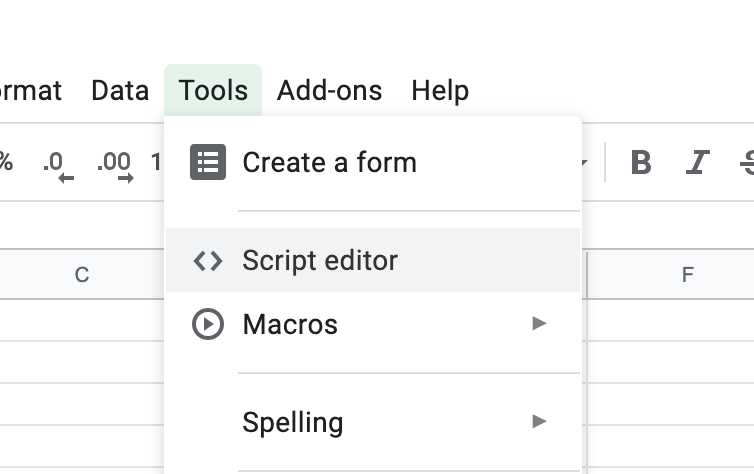Master Excel Formulas in Google Sheets Easily

Welcome to the world of Google Sheets, where data manipulation, analysis, and management become much more manageable, especially if you're transitioning from Microsoft Excel. While Google Sheets doesn't support every Excel formula, it offers plenty of powerful tools that can help you achieve similar results with a bit of tweaking. In this comprehensive guide, we'll delve into how to master Excel formulas in Google Sheets, making your spreadsheets both functional and efficient.
Understanding Formula Differences

Before diving into the specifics, it’s crucial to understand that Google Sheets and Excel have different formula syntaxes and functions. Here are some key differences:
- Function Names: While many functions have the same name in both platforms (like
SUM,AVERAGE), some differ or aren’t available in Google Sheets. - Date and Time Handling: Google Sheets uses a different date serial number system, which can affect date and time calculations.
- Array Formulas: Google Sheets provides better support for array formulas, allowing for more complex computations.
Translating Excel Formulas to Google Sheets

Here’s how you can translate common Excel formulas into Google Sheets:
| Excel Formula | Google Sheets Equivalent |
|---|---|
IF(ISNUMBER(FIND(“keyword”, A1)), “True”, “False”) |
IF(SEARCH(“keyword”, A1) > 0, “True”, “False”) |
VLOOKUP(A1, data_range, 2, FALSE) |
VLOOKUP(A1, data_range, 2, FALSE)or INDEX(data_range, MATCH(A1, data_range,, 0)) |
COUNTIF(range, “string”) |
COUNTIF(range, “string”) |

🔍 Note: The SEARCH function in Google Sheets is not case-sensitive, unlike FIND in Excel.
Advanced Techniques for Formula Mastery

1. Using Array Formulas

Google Sheets offers robust array formula support which can simplify complex calculations:
- Array Formula: Use
ARRAYFORMULAto perform a single formula across an entire range. - Example: To apply a calculation to a column, you can use
=ARRAYFORMULA(A1:A10 * 2)instead of writing the formula for each cell individually.
2. Custom Functions with Google Apps Script

If Google Sheets lacks a function you need, you can create custom functions:
- Go to Tools > Script Editor.
- Write a function in Google Apps Script and use it directly in your spreadsheet.
function convertTemp(celsius) {
return celsius * 1.8 + 32;
}
Then, in your Google Sheet, you can use =convertTemp(A1) to convert Celsius to Fahrenheit.
3. Conditional Formatting with Formulas

Google Sheets allows you to use formulas for conditional formatting, making data visualization easier:
- Example: Highlight cells where the value is greater than the average with:
=A1 > AVERAGE(A:A).
Tips for Seamless Spreadsheet Integration

Here are some tips to ensure a smooth transition from Excel to Google Sheets:
- Import Excel Files: You can directly import .xlsx files into Google Sheets, converting many Excel formulas automatically.
- Use Keyboard Shortcuts: Many Excel shortcuts work in Google Sheets, but there are specific ones for Google Sheets you might find handy.
- Leverage Google Workspace: Integrate Google Sheets with other Google products like Docs or Forms for enhanced productivity.
Optimizing Performance

With complex formulas, performance can become an issue. Here are some optimization techniques:
- Minimize Volatile Functions: Functions like
NOW()orRAND()recalculate every time the sheet updates, slowing down the process. - Use Named Ranges: Naming ranges simplifies formulas and makes your sheet easier to maintain.
- Eliminate Unnecessary References: Ensure cells with formulas don’t reference unnecessary cells or ranges.
Encapsulating Final Thoughts

Mastering Excel formulas in Google Sheets isn’t just about learning a new tool; it’s about adapting your existing knowledge to a platform designed for cloud collaboration. By understanding the differences in syntax, leveraging Google Sheets’ unique features like array formulas, and optimizing for performance, you can make the transition smoother and more productive. The key is to be flexible and creative with how you approach problems, knowing that while the formulas might look different, the underlying principles of data management and analysis remain the same.
Can I use all Excel formulas in Google Sheets?

+
Not all Excel formulas are available in Google Sheets due to platform differences. However, many common functions like SUM, AVERAGE, and VLOOKUP work similarly.
How do I make my Google Sheets work offline?

+
To work offline in Google Sheets, enable offline access in Google Drive. You can find this option under Settings, ensuring you can edit your spreadsheets without internet access.
What are the benefits of using Google Sheets over Excel?

+
Google Sheets offers real-time collaboration, cloud storage, automatic saving, and seamless integration with other Google services. It’s also free to use, which is an added advantage.